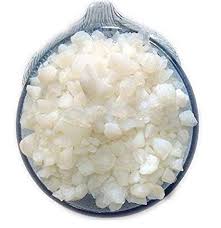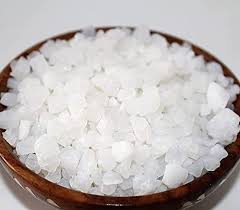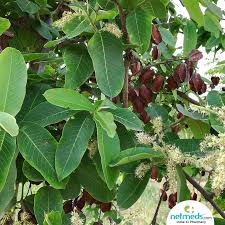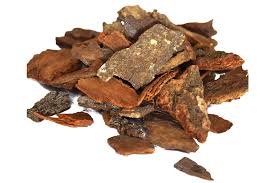
The Science Behind Amla’s Nutritional Power
Amla, also known as Indian gooseberry, has been cherished for centuries in traditional medicine and nutrition for its incredible health benefits. Beyond its tart taste and refreshing flavor lies a powerhouse of nutrition that science is increasingly uncovering. Packed with essential vitamins, minerals, antioxidants, and bioactive compounds, amla supports immunity, digestion, skin health, and more. This article delves into the science behind amla’s nutritional profile and explains why this humble fruit deserves a place in your daily diet. At dirghaanshi, we bring you detailed insights to help you understand how amla can be a key to vibrant health and well-being.
Long Description
- Nutritional Composition of Amla
Rich in Vitamin C: Amla contains one of the highest concentrations of vitamin C found in any natural fruit, sometimes up to 20 times more than oranges. Vitamin C is crucial for immune function, collagen synthesis, and antioxidant defense.
Dietary Fiber: Amla is high in soluble and insoluble fibers which aid digestion, promote gut health, and regulate blood sugar levels.
Minerals: It contains calcium, iron, phosphorus, and magnesium, essential for bone health, oxygen transport, and enzymatic functions.
Polyphenols and Flavonoids: These plant compounds have strong antioxidant properties that protect the body against oxidative stress and inflammation.
- The Antioxidant Powerhouse: How Amla Combats Oxidative Stress
Amla’s antioxidant content helps neutralize free radicals, unstable molecules that damage cells and accelerate aging.
Studies show that amla extract reduces oxidative markers in the blood, protecting organs from damage and supporting longevity.
Key antioxidants include emblicanin A and B, gallic acid, and ellagic acid.
- Vitamin C: The Star Nutrient of Amla
Vitamin C in amla is unique because it remains stable longer than in other fruits due to the presence of bioflavonoids.
This vitamin boosts immunity by stimulating white blood cells and enhancing antibody production.
Vitamin C also helps in the synthesis of collagen, which maintains skin elasticity and joint health.
- Amla’s Role in Immunity and Inflammation
Amla boosts immune response by increasing natural killer cell activity and cytokine production.
It exhibits potent anti-inflammatory effects by inhibiting pro-inflammatory enzymes and cytokines.
These properties help in managing chronic inflammatory conditions such as arthritis and respiratory issues.
- Impact on Digestive Health
The high fiber content supports bowel regularity and promotes a healthy gut microbiome.
Amla stimulates digestive enzymes and bile production, improving digestion and nutrient absorption.
Its mild laxative effect helps in detoxification and cleansing of the digestive tract.
- Cardiovascular Benefits
Amla helps reduce LDL (bad) cholesterol and triglycerides while increasing HDL (good) cholesterol, promoting heart health.
It improves blood vessel function and reduces oxidative stress, lowering the risk of hypertension and atherosclerosis.
Regular consumption supports better circulation and prevents blood clots.
- Role in Blood Sugar Regulation
Amla improves insulin sensitivity and helps regulate blood sugar levels, making it beneficial for diabetics.
Its polyphenols slow carbohydrate digestion and absorption, reducing blood sugar spikes.
Studies indicate amla supplementation can lower fasting blood glucose and HbA1c levels.
- Skin and Hair Benefits Backed by Science
Antioxidants and vitamin C in amla prevent oxidative damage to skin cells, reducing wrinkles and signs of aging.
It promotes collagen production and skin hydration for a radiant complexion.
Amla oil strengthens hair follicles, reduces dandruff, and promotes hair growth by nourishing the scalp.
- Anti-Cancer Potential
Preliminary studies suggest that amla’s antioxidants can inhibit the growth of cancer cells and promote apoptosis (programmed cell death).
Its compounds protect DNA from damage caused by carcinogens and oxidative stress.
While promising, more clinical research is needed to fully confirm these effects.
- How to Incorporate Amla into Your Diet
Fresh amla fruit, amla juice, or dried amla powder can be consumed daily for maximum benefits.
Amla can be added to smoothies, salads, or used as a seasoning in cooking.
Traditional recipes like amla murabba, pickles, and herbal teas offer tasty ways to enjoy amla.
Amla supplements and capsules are also available but consult a healthcare professional before starting.
- Scientific Studies Supporting Amla’s Benefits
Multiple peer-reviewed studies published in journals like Phytotherapy Research and Journal of Ethnopharmacology validate amla’s antioxidant, anti-inflammatory, and anti-diabetic effects.
Research highlights amla’s role in enhancing immune function and protecting liver health.
Its widespread use in Ayurveda is now supported by modern scientific findings.
Conclusion
The science behind amla’s nutritional power reveals why it is truly a superfruit with diverse health benefits. From boosting immunity and improving digestion to promoting radiant skin and heart health, amla’s rich profile of vitamins, minerals, and antioxidants makes it an essential part of a natural wellness regimen. Whether you consume it fresh, as juice, or in supplements, incorporating amla into your lifestyle can lead to significant improvements in overall health and vitality. At dirghaanshi, we encourage you to embrace this ancient fruit for a healthier, balanced, and vibrant life.












